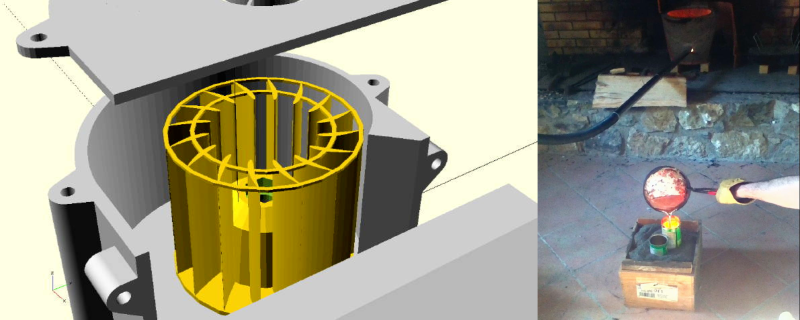You know how it is. You’re working on a project that needs to move air or water, or move through air or water, but your 3D design chops and/or your aerodynamics knowledge hold you back from doing the right thing? If you use OpenSCAD, you have no excuse for creating unnecessary turbulence: just click on your favorite foil and paste it right in. [Benjamin]’s web-based utility has scraped the fantastic UIUC airfoil database and does the hard work for you.
While he originally wrote the utility to make the blades for a blower for a foundry, he’s also got plans to try out some 3D printed wind turbines, and naturally has a nice collection of turbine airfoils as well.
If your needs aren’t very fancy, and you just want something with less drag, you might also consider [ErroneousBosch]’s very simple airfoil generator, also for OpenSCAD. Making a NACA-profile wing that’s 120 mm wide and 250 mm long is as simple as airfoil_simple_wing([120, 0030], wing_length=250);
If you have more elaborate needs, or want to design the foil yourself, you can always plot out the points, convert it to a DXF and extrude. Indeed, this is what we’d do if we weren’t modelling in OpenSCAD anyway. But who wants to do all that manual labor?
Between open-source simulators, modelling tools, and 3D printable parts, there’s no excuse for sub-par aerodynamics these days. If you’re going to make a wind turbine, do it right! (And sound off on your favorite aerodynamics design tools in the comments. We’re in the market.)
















the hard part isn’t getting proper airfoil geometry, its validating that geometry, a very non-trivial task. a design that looks like it would work well might turn out to be really inefficient. when i was playing with ducted fans, i just used static thrust tests on a kitchen scale and i think i had over 30 3d-printed test articles before i gave up and bought a pre-engineered part.
xfoil is the typical way to characterise an airfoil and has long been a standard tool.
http://web.mit.edu/drela/Public/web/xfoil/
I should have mentioned, xfoil is F/OSS, released under the GNU General Public License and written in Fortran.
3d printing and fluid dynamics, a match made in heaven. One provides geometry at no cost, the other is all about geometry. One disturbing thing about Github though, in the early days they did not require project licencing. No published licence meens it defaults to creator copywrite, ie, proprietory. If memory serves the FSF pointed it out, (I remember, because I pointed it out to Richard Stalman in person). In responce Github made creators at least consider licencing by requiring a selection at creation of a project, including a no licence option. Since then however, Microsoft bought Github, and the licence requirement page has been quietly removed. Is Microsoft quietly fighting open source while publicly singing it praises?
The option is still there? Just defaults to no license. Think it is more about streamlining the experience.
Which meens defaults to proprietary. Why not default to something more permissive, or default to no license but notify of the consequences? I would agree with their no license move if no licence did not by copyright law translate to the most restrictive conditions possible.
“Is Microsoft quietly fighting open source while publicly singing it praises?”
Nah. They shelled out $7B for Github just out of sheer kindness of their hearts.
Whoever trusts that $BIGCORP (or probably any other) does it in spite of known history.